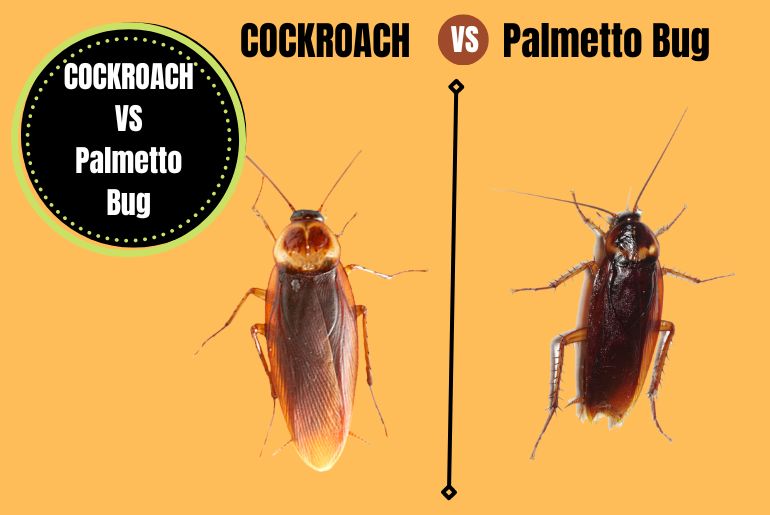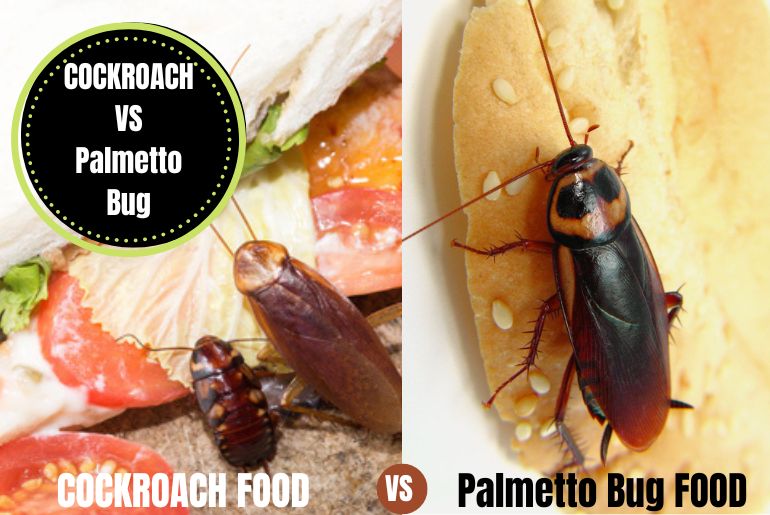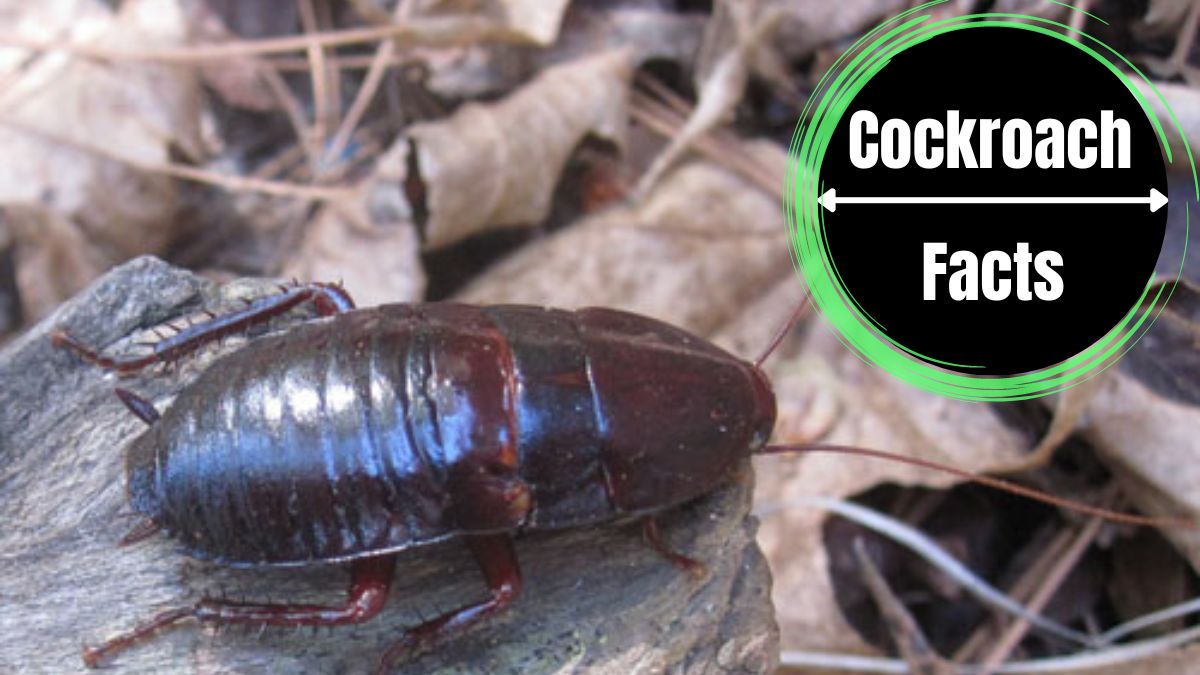Palmetto Bug is a specific type of cockroach with differences in distribution, shape, size, color, food, habitat, wings, movement, and life cycle. The lifestyle of palmetto bugs is also different and other cockroaches. They prefer to live in dry places, unlike other roach species. They can produce a musky smell, and this ability cannot be found in other cockroaches.
Palmetto Bug Vs Cockroach
Size
Cockroaches are generally larger than palmetto bugs, and they have longer, more slender bodies. Palmetto bugs have shorter, stockier bodies and are more oval. Roaches can range from about 1/2 an inch to over 3 inches, while palmetto bugs are typically only about 1/2 an inch long. Cockroaches also have longer antennae, while palmetto bugs have shorter and thicker antennae.

Color and Body Shape
Cockroaches are typically brown or black, while palmetto bugs are typically brown or reddish. Also, cockroaches have longer, thinner bodies, but palmetto bugs have shorter, thicker bodies.
Wings
The size and color of Palmetto bug wings are different from other cockroaches. Cockroaches have longer and thinner wings than palmetto bugs. Palmetto bugs’ wings are browner in color, while cockroaches’ wings are grayer in color.
Movement
There are many differences between the movement of cockroaches and palmetto bugs. The Cockroaches are much faster than palmetto bugs. They can run up to 3 miles per hour, whereas palmetto bugs only travel about 1/3 of that speed. Cockroaches are also able to fly, whereas palmetto bugs cannot. Additionally, cockroaches can climb vertical or even upside-down surfaces, whereas palmetto bugs can only climb horizontal surfaces. Also, cockroaches can squeeze through very small spaces, whereas palmetto bugs are not.
Food
The difference between the food of cockroaches and palmetto bugs is that cockroaches are omnivores and palmetto bugs are herbivores. Cockroaches will eat just about anything, including garbage, while palmetto bugs only eat plants. Additionally, cockroaches can go long periods without food and can even survive on very little water, while palmetto bugs need a more consistent supply of both food and water.

Life Cycle
There are also some differences between the life cycle of Cockroaches and Palmetto Bugs.
- Cockroaches undergo a three-stage life cycle (egg, nymph, adult), while palmetto bugs have a four-stage life cycle (egg, nymph, pupa, adult).
- Roaches can live for up to two years, but palmetto bugs only live for about one year.
- Cockroaches can reproduce much more quickly than palmetto bugs, with a female cockroach able to lay up to 50 eggs at a time.
Habitat
Cockroaches typically live in the dark, moist places such as under sinks or in cracks and crevices. Palmetto bugs, on the other hand, prefer dryer environments and are often found in attics or crawl spaces. Cockroaches are also more likely to be found in urban areas, while palmetto bugs are more common in rural areas.
Hazards
The cockroaches are known to be able to spread disease, while palmetto bugs do not pose this same threat. Roaches can also trigger asthma and allergy attacks in sensitive people, while palmetto bugs are not known to cause these reactions. Generally, cockroaches are considered to be more of a nuisance than palmetto bugs, as they are more likely to invade homes and businesses in search of food and shelter.
Smell
Roaches have a strong unpleasant smell. This is because cockroaches produce more pheromones than palmetto bugs, which gives them a stronger scent. Cockroaches live in dirty environments, which can contribute to their unpleasant smell. Palmetto bugs, on the other hand, typically have a milder, more tolerable smell. Palmetto bugs emit a musky smell which helps you in their identification.
Conclusion
The article above discussed all the possible differences between a palmetto bug and a cockroach. After reading this article, you can differentiate between palmetto bugs and other roaches.

